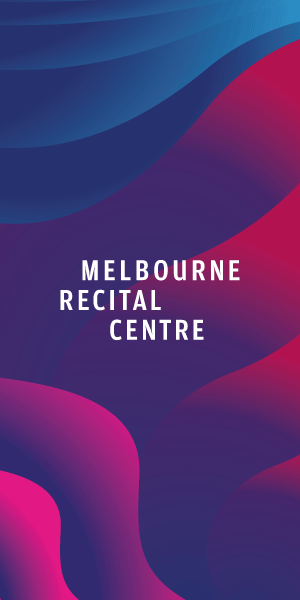Protections for Carlton’s UNESCO listed sites expanded
The heritage area surrounding the UNESCO World Heritage-listed Royal Exhibition Building and Carlton Gardens has been extended to protect the site from over-development.
Height controls for developments in the buffer zone, or World Heritage Environs Area (WHEA), will be implemented to ensure the views from the site aren’t overshadowed by tall buildings.
City of Melbourne councillors voted unanimously to extend the WHEA boundary to the west and south of the building and introduce height controls for sections of Rathdowne St.
Carlton Residents’ Association member Peter Sanders said that locals were largely supportive of Heritage Victoria’s (HV) recommendations.
“The strategy plan is good in principle – extending the WHEA to the western side of Drummond St is a very big plus,” Mr Sanders said.
Another big plus is the proposal removes the distinction within the WHEA for areas of greater and lesser significance and makes everything equal.
Mr Sanders said that incorporating areas of Carlton such as the site of the old Children’s Hospital on Rathdowne and Pelham streets into the WHEA was a positive development.
“There’s an emphasis on the ensuring the views to and from the Royal Exhibition Building are maintained and an intent to control height limits for buildings within the WHEA boundary which we support,” Mr Sanders said.
The new controls would see large properties along Rathdowne St south of Pelham St subject to the same built form controls as the surrounding area.
In its submission to HV, the City of Melbourne pushed for mandatory height controls in this area as “large sites such as 1 Rathdowne St (former Cancer Council site) experience continued pressure for much higher development”.
The council also recommended the Royal Society site on La Trobe St have mandatory height controls, as it sits directly across the road from the UNESCO-listed site.
Despite accepting the majority of Heritage Victoria’s recommendations, Cr Rohan Leppert said they had made some amendments to account for the “economic impact” and ensure the controls weren’t excessive.
“We should not be pursuing unnecessary controls – residential zones to the north of Carlton Gardens already have mandatory height limits in them,” Cr Leppert said.
“It is quite excessive for us to agree that all of those hundreds of properties that are shielded in view from the Royal Exhibition Building by properties on Carlton St, must forever more be at a particular height even though that has no bearing whatsoever on the world heritage values of the site.”
Canning St resident Katie Roberts was not in favour of the “ever-tightening heritage policy” in the area.
In her submission to the council, she said the new controls would make it difficult to afford a home in Carlton and would “prioritise buildings over people”.
“The 26-hectare surrounding park already provides a large ‘buffer zone’ for the Royal Exhibition Building and expanding this zone will not have any positive value,” Ms Roberts wrote.
“We own a property on Barkly St which will be in the revised controls to the north –we have tried and failed to renovate our house earlier this year to accommodate our growing family.”
“Part of the failure was that we were advised that our plans were acceptable by a City of Melbourne Planner, but later a heritage advisor objected and derailed the process.”
Ms Roberts said that she believed the buffer zone should be limited to Carlton Gardens and not include residential homes.
“You cannot even see the Gardens or the Exhibition Building from Barkly St [and] properties in Carlton, like ours, are tiny,” Ms Roberts said.
“To add even one additional bedroom to a two-bed house is very expensive and challenging to design – more heritage restrictions make this more costly and continue to erode affordability.”
Cr Leppert said it was important that the height controls to the north were only in reference to land that is visible to and from the Exhibition Building and “not land that cannot possibly have a material impact on the world heritage values”.
“It would create significant cost and burden landowners who want to make modest changes to properties,” Cr Leppert said.
“It’s all well and good to try and protect views from the forecourt of the Melbourne Museum over the Royal Exhibition Building to the city, but there is an entire city there and we cannot act on heritage-based recommendations alone from one camera shot … to decide the basis of building heights for an entire city block.”
Deputy Lord Mayor Nicholas Reece said that as Melbourne’s only world-heritage listed site it was “impossible” to overstate the importance of the building and the gardens to the people of Melbourne.
“A lot has changed in Melbourne since the original world heritage and related planning controls were put in place, so this review is timely,” the Deputy Lord Mayor said.
Melbourne is a growing city and is a city under development application pressure.
Cr Reece also said that Melburnians would soon be able to enjoy a $20 million upgrade of the dome at the Royal Exhibition Building which was completed during the lockdown.
“When we get our freedom back one of the many new things that will exist for Melburnians to enjoy is visiting the dome and viewing the magnificent views that are offered from the new renovated viewing platform of Carlton and the surrounding areas,” Cr Reece said.
“So that is something for Melburnians to look forward to and a reminder of how important the site is.”
For more information: participate.melbourne.vic.gov.au/carlton-gardens-master-plan-review
Caption: The Royal Exhibition Building and Carlton Gardens became Melbourne’s only UNESCO listed site in 2004.
Caption: One of the new changes will likely be new height controls for Rathdowne St.

Bottega Tasca: Carlton’s go-to fine wine boutique






 Download the Latest Edition
Download the Latest Edition